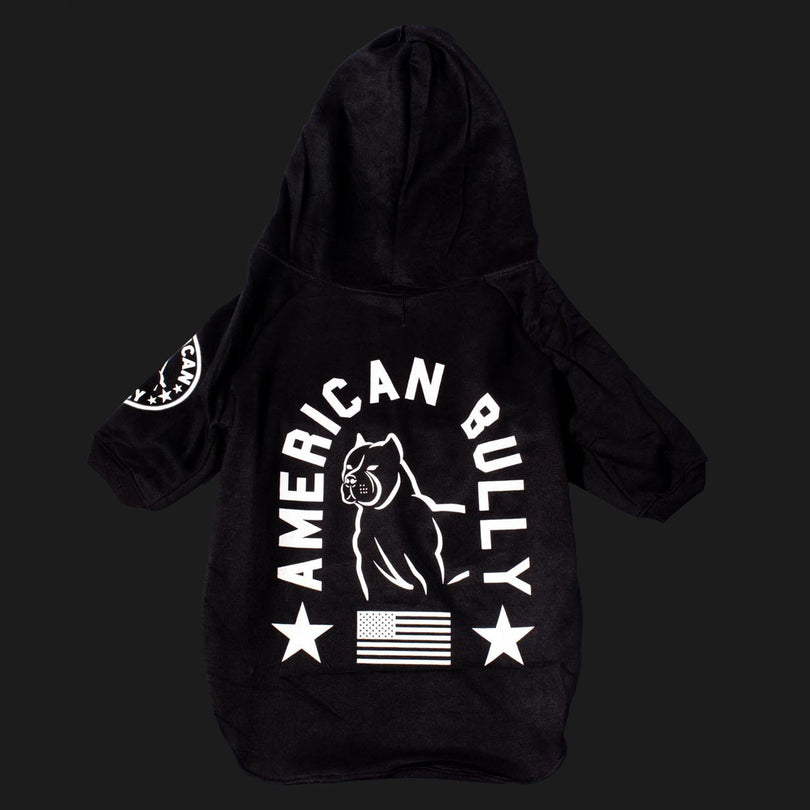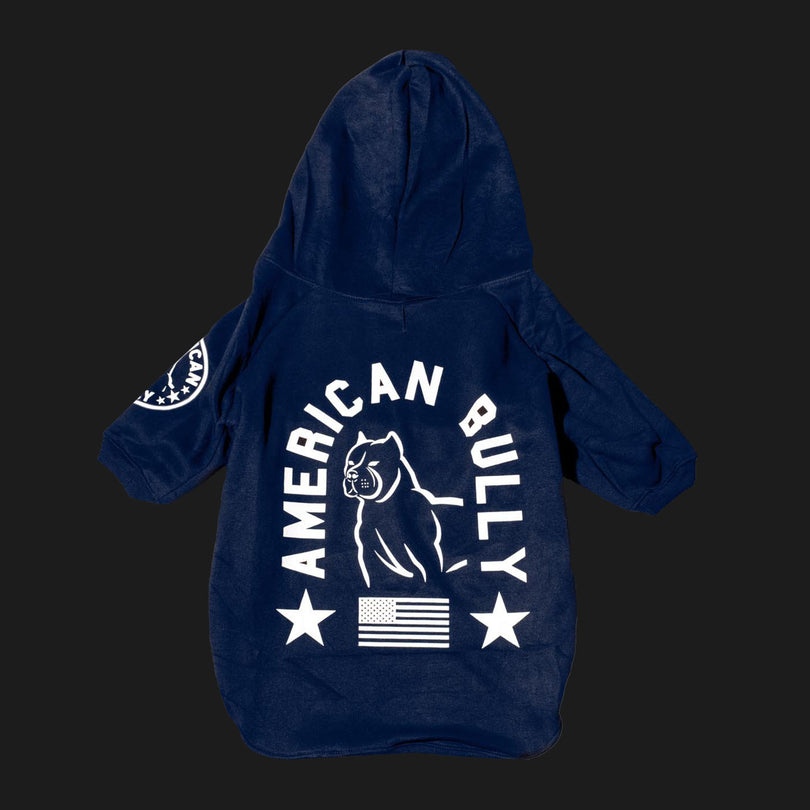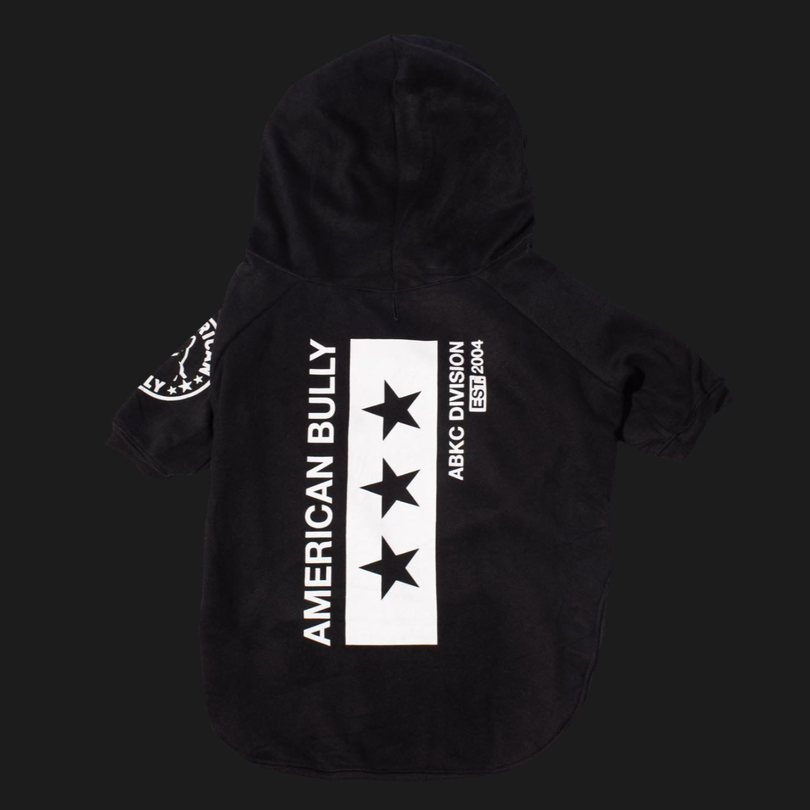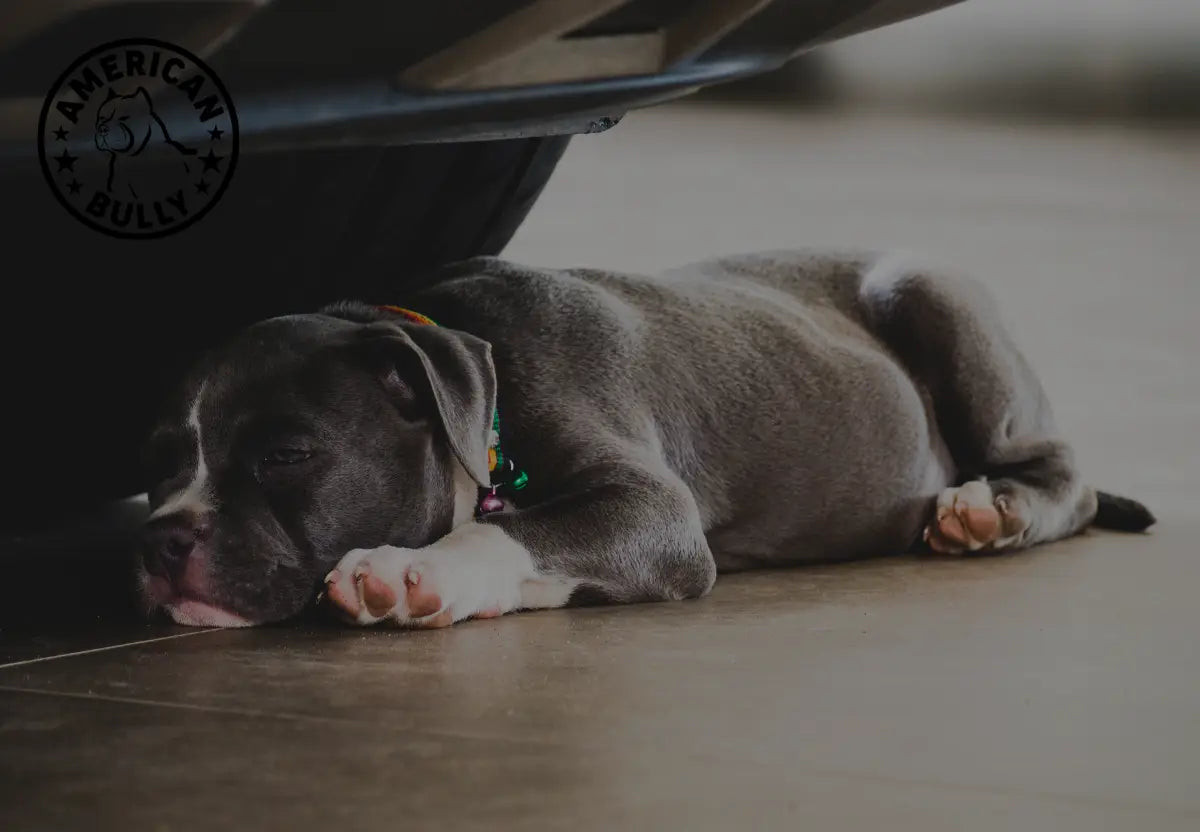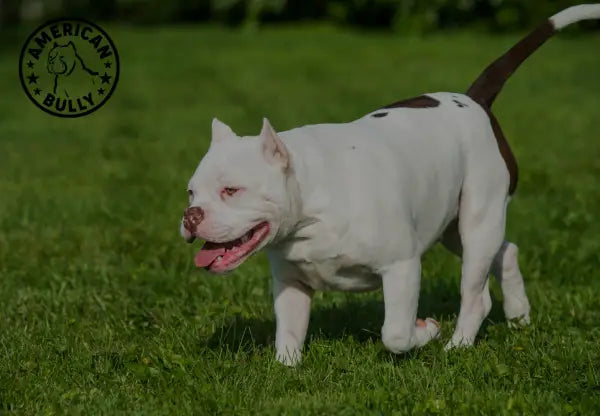American Bullies are loyal, confident, and affectionate dogs that can thrive in nearly any setting — including bustling urban environments — if they are given the right guidance and socialization. However, city living presents unique challenges and opportunities for this powerful, people-loving breed. From noisy streets to crowded parks, your Bully will encounter a wide range of sights, sounds, and situations that require careful preparation.
In this comprehensive guide, we’ll explore proven strategies for socializing your American Bully in an urban environment, ensuring they remain well-adjusted, confident, and a joy to be around.
Why Socialization Matters for American Bullies
Socialization is more than just “getting your dog used to people.” It’s the process of exposing them to a wide variety of environments, animals, humans, sounds, and experiences — in a positive and controlled way — to help them develop into a stable, confident, and friendly adult.
For American Bullies, socialization is especially important because:
-
They are strong, muscular dogs that can intimidate strangers if not well-mannered.
-
They are intelligent and eager to please, which means they thrive when given structured learning experiences.
-
Poor socialization can lead to fearfulness, reactivity, or overexcitement in stimulating city settings.
A well-socialized Bully will:
-
Walk calmly through busy streets.
-
Remain composed around other dogs and people.
-
Respond to commands even in distracting environments.
-
Adapt easily to unexpected changes in their surroundings.
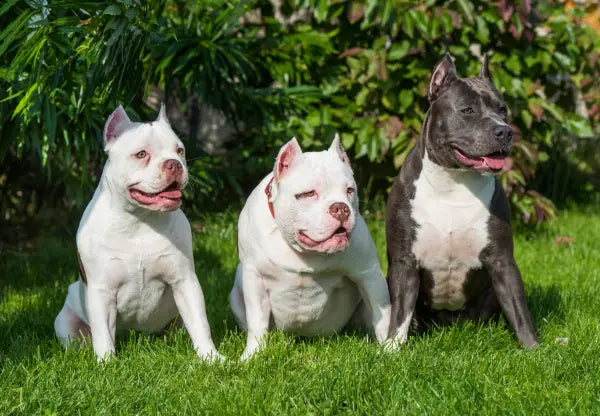
Understanding the Urban Environment
Before diving into strategies, it’s important to recognize the specific challenges city living brings to a dog:
-
High Noise Levels — Sirens, construction, honking horns, and shouting crowds can overwhelm an under-socialized dog.
-
Dense Populations — Frequent encounters with strangers, cyclists, joggers, and other dogs.
-
Limited Green Space — Urban parks and dog runs may be crowded and full of distractions.
-
Unpredictable Surfaces and Scents — Sidewalk grates, elevators, escalators, subway stations, and heavy foot traffic can be intimidating.
-
Varied Dog Etiquette — Not all city dogs are friendly or well-trained, making encounters unpredictable.
The goal is to prepare your American Bully to handle all of these variables calmly and confidently.
Step-by-Step Socialization Strategies
1. Start Early — But Never Too Late
-
Puppy Stage (8–16 weeks): This is the prime socialization window. Introduce your pup to as many positive experiences as possible.
-
Adolescent & Adult Dogs: If you’ve adopted an older Bully, go at their pace. Gradual exposure works best to prevent overwhelm.
Tip: Pair new experiences with treats, praise, and play so your dog forms positive associations.
2. Gradual Exposure to City Sounds
Noise sensitivity is a common challenge for urban dogs.
-
Sound CDs or Apps: Play recordings of city noises (sirens, traffic, construction) at low volume while engaging your Bully in play or training.
-
Observation Walks: Stand at a comfortable distance from busy intersections or construction sites, rewarding calm behavior.
-
Build Up Gradually: Slowly close the distance as your dog becomes more relaxed.
3. Introduce New Surfaces and Obstacles
City streets can have everything from slick tiles to subway grates.
-
Surface Training: Walk your Bully over grass, concrete, metal grates, wooden decks, and pebbled paths.
-
Stair and Elevator Practice: Use apartment or public building stairs and elevators during quiet times for practice.
-
Confidence Boosting: Use treats and a cheerful tone to encourage them over “scary” textures.
4. Controlled Dog-to-Dog Interactions
Dog encounters in the city can be intense due to tight spaces.
-
Choose Calm Dogs First: Start with calm, friendly dogs in neutral territory.
-
Watch Body Language: Look for loose tails, soft eyes, and relaxed ears.
-
Avoid Crowded Dog Parks Early On: Start with quieter locations to build confidence before visiting high-energy spaces.
5. Positive People Experiences
Your Bully will meet strangers daily.
-
Different Looks and Movements: Introduce your dog to people wearing hats, sunglasses, carrying bags, jogging, or riding bikes.
-
Controlled Greetings: Teach your Bully to sit before meeting someone.
-
Avoid Overcrowding: Keep introductions one at a time to prevent overwhelm.
6. Use Public Transportation Practice
If your city requires dogs to be on public transit:
-
Start Small: Begin with empty or off-peak buses/trains.
-
Bring Comfort Items: A familiar blanket or toy can help reduce stress.
-
Reward Calm Behavior: Treats for lying down quietly during the ride.
7. Desensitization to Touch
City life often means close contact — in vet offices, grooming, or even on busy sidewalks.
-
Handling Exercises: Gently touch paws, ears, tail, and mouth daily while rewarding your dog.
-
Simulated Crowds: Practice walking close to friends or family to get them used to less personal space.
8. Structured Training in Public Spaces
Obedience training isn’t just for the living room.
-
Start in Low-Distraction Areas: Practice sit, stay, down, and heel in a quiet park.
-
Level Up: Move to busier sidewalks or plazas once your dog responds reliably.
-
Impulse Control Games: Practice “leave it” and “watch me” when encountering distractions like food scraps or squirrels.
9. Safe Meetups and Group Classes
Look for:
-
Urban Socialization Classes: Classes held in parks or busy streets.
-
Breed Meetups: American Bully or bully-breed gatherings where owners understand the breed’s temperament.
-
Pack Walks: Structured group walks that encourage calm coexistence.
10. Respecting Your Dog’s Limits
Not every American Bully will be a social butterfly.
-
Watch for stress signals: yawning, lip licking, turning away, tucked tail.
-
Take breaks when needed.
-
End on a positive note — stop before your dog gets overwhelmed.
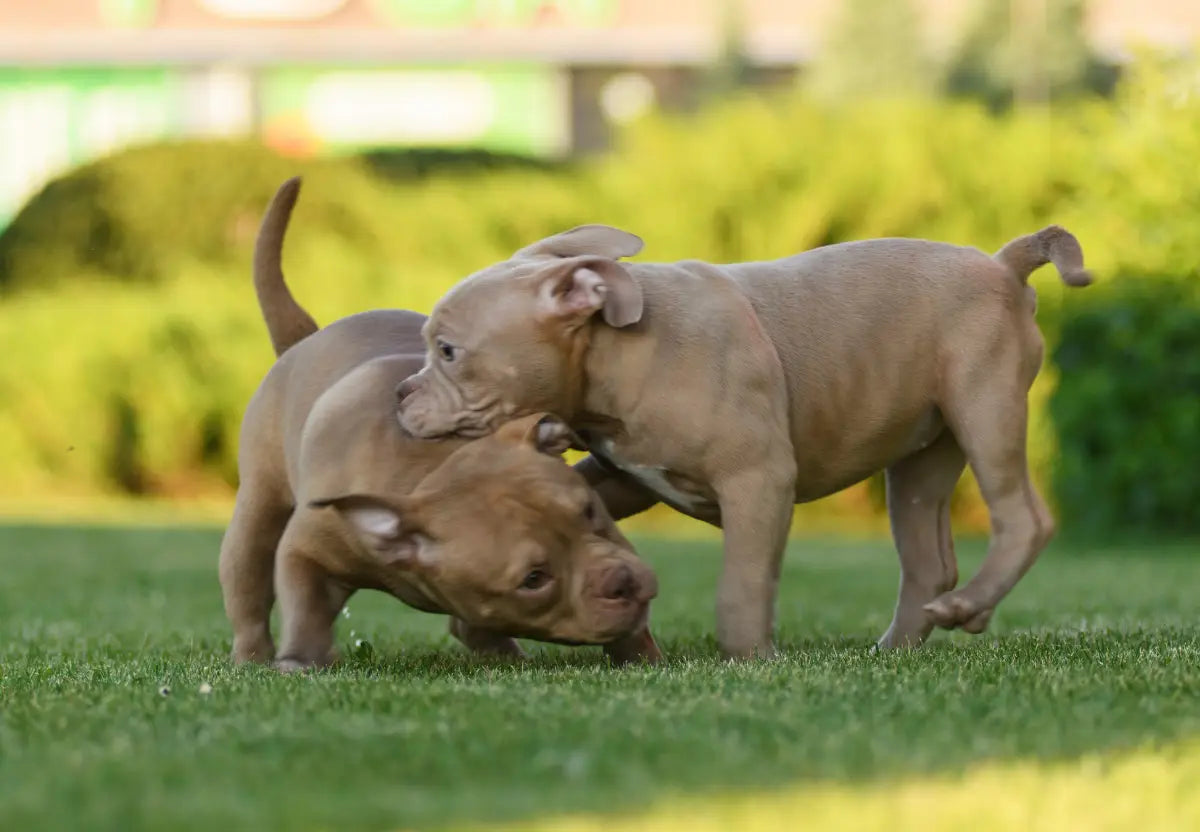
Common Mistakes to Avoid
-
Forcing Interactions: If your dog is uncomfortable, give them space and time.
-
Skipping Basic Training: A strong breed without manners in a city can be dangerous.
-
Neglecting Mental Stimulation: City life can mean less physical space, so puzzle toys, scent work, and training are vital.
-
Over-Reliance on Dog Parks: Not every dog is a good fit for them; controlled walks can be more beneficial.
Enrichment for City-Dwelling American Bullies
Mental and physical stimulation prevent boredom and behavior problems.
-
Scent Games: Hide treats around your apartment.
-
Urban Agility: Use benches, curbs, and steps as an obstacle course.
-
Interactive Toys: Puzzle feeders, snuffle mats, and chew toys.
-
Field Trips: Visit different neighborhoods, parks, and waterfront areas for variety.
Safety Considerations
-
Heat Sensitivity: American Bullies can overheat quickly — avoid midday walks in summer.
-
Paw Protection: Hot pavement or salted winter sidewalks can harm paws; use booties if needed.
-
Secure Gear: Use a strong harness or collar, especially in crowded areas.
-
Leash Etiquette: Keep a short but loose leash in busy spaces to maintain control.
Case Study: Max the American Bully in New York City
Max, a 2-year-old American Bully living in NYC, started socialization early. His owner followed a routine of:
-
Morning quiet walks through the neighborhood.
-
Weekly visits to dog-friendly cafes for people-watching.
-
Structured obedience practice in Central Park.
-
Gradual introduction to subway rides. Now, Max walks calmly past street performers, ignores food carts, and sits politely for strangers who ask to pet him — proof that consistent socialization works.
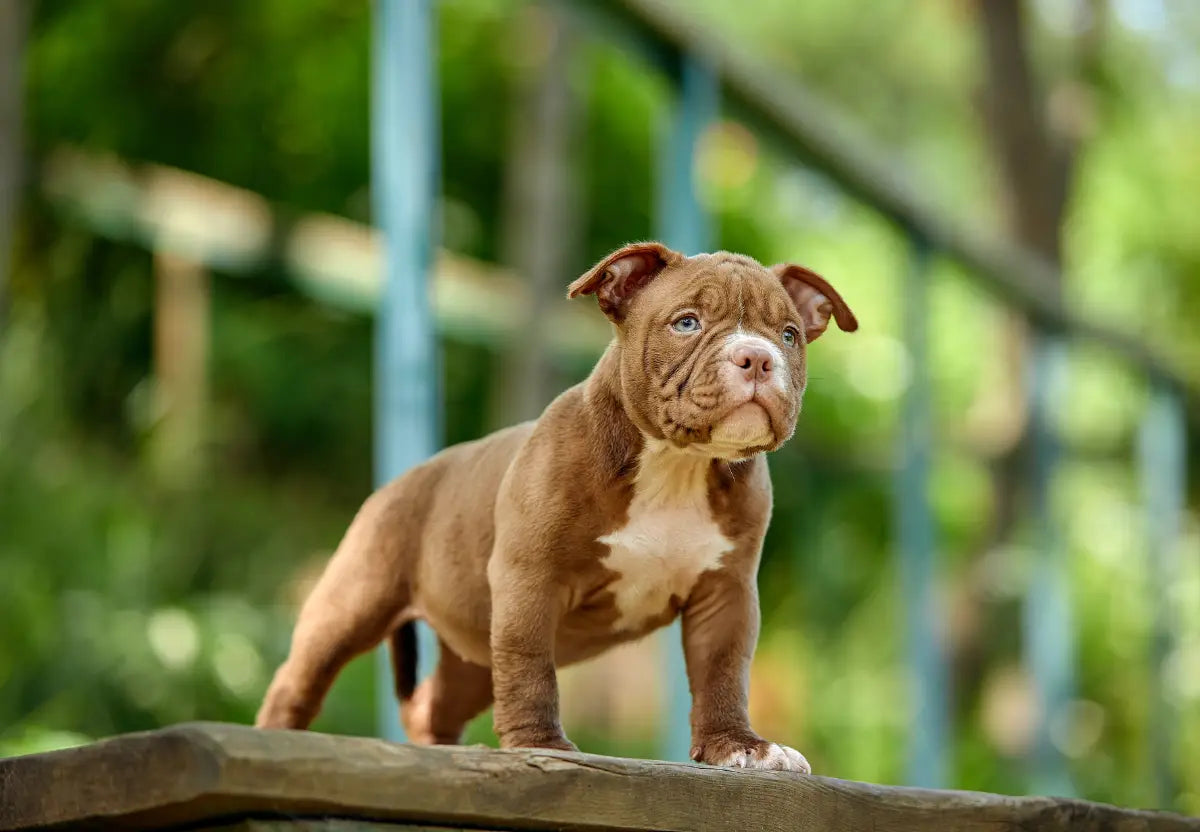
Final Thoughts
Socializing an American Bully in an urban environment takes patience, planning, and consistency — but the reward is a confident, well-behaved companion who can handle the hustle and bustle of city life. Whether you’re raising a Bully puppy or helping an adult dog adjust to city living, the key is positive exposure, respect for their comfort level, and ongoing reinforcement.
Urban environments can be exciting playgrounds for American Bullies when they are prepared for the adventure. With the right strategies, you can help your Bully not just survive the city — but thrive in it.





